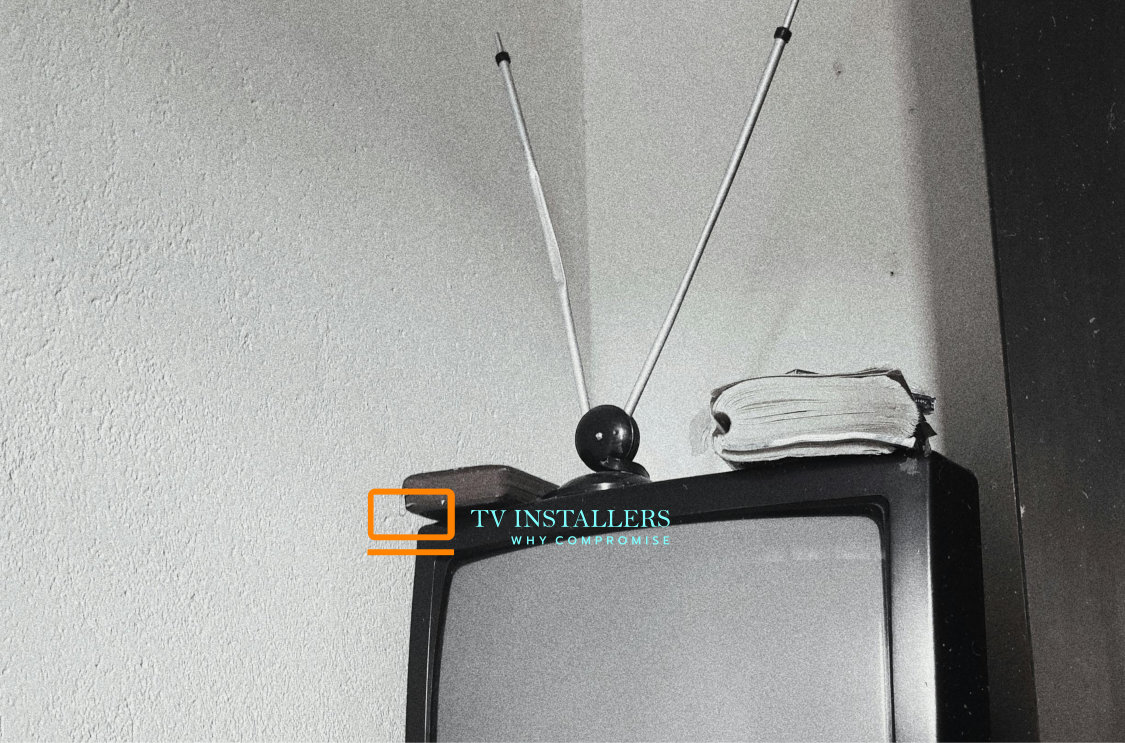Indoor aerials provide a cost-effective way to access Freeview and YouView services without the need for outdoor installations or extensive wiring.
They work efficiently in urban areas with weak signals and modern designs blend seamlessly into home environments.
Types like log periodic, monopole, loop, and flat-panel aerials cater to diverse needs, each offering unique advantages. Placement near a window and away from electronics boosts performance.
Amplified aerials are ideal for weak signal areas but can amplify interference, while non-amplified versions suit strong signal regions.
Understanding your specific setup and needs helps in making the best choice, leading to clearer channels and better performance.
Key Information
- Indoor aerials provide cost-effective access to Freeview and YouView services.
- Modern indoor aerials deliver clear picture and sound quality.
- They are easy to set up and eliminate the hassle of external wiring.
- Perfect for urban areas with weak signal reception.
- Discreet designs fit seamlessly into any home environment.
Benefits of Indoor Aerials
Leveraging advancements in technology, indoor aerials provide a cost-effective and convenient solution for accessing Freeview and YouView services without the need for complex installations.
You’ll appreciate their easy setup, which eliminates the hassle of external wiring, making them perfect for urban areas with weak signal reception.
Despite their slightly weaker signal strength compared to outdoor aerials, modern indoor aerials deliver clear picture and sound quality comparable to their outdoor counterparts. They’re designed to be reliable in all weather conditions, ensuring uninterrupted viewing.
Plus, their discreet design fits seamlessly into any home environment. For many households, indoor aerials offer a practical, hassle-free way to enjoy a wide range of TV channels without breaking the bank.
Types of Indoor Aerials
When considering indoor aerials, it’s essential to understand the various types available to guarantee you select the one that best meets your viewing needs and environment.
Log Periodic Aerials excel at detecting weak signals over long distances and can be positioned vertically or horizontally for the best reception.
Monopole Aerials, featuring a single, chunky antenna, are omnidirectional and easy to install, suitable for various indoor settings.
Loop Aerials provide strong, omnidirectional signals and are compact, requiring minimal space, ideal for indoor use.
Flat-Panel Aerials are slim, lightweight, and aesthetically pleasing, offering good signal reception and easy installation on walls or windows.
Each type has unique features to cater to different setups and signal needs.
Choosing the Right Aerial
Selecting the right indoor aerial requires considering factors like the distance to TV transmitters, the specific type of aerial, and the ideal mounting location for best signal reception. You’ll need to assess whether you’re close enough to a transmitter to use a standard aerial or if you require an amplified one for weak signal areas. Types of aerials, such as log periodic, monopole, loop, and flat-panel, each serve different needs.
| Factor | Considerations |
|---|---|
| Distance to Transmitters | Standard vs. Amplified Aerial |
| Type of Aerial | Log Periodic, Monopole, Loop, Flat-Panel |
| Mounting Location | Near Window, Away from Electronics |
| Brand and Model | Fit Budget and Specific Needs |
Research different brands and models to strike a balance between cost and performance.
Optimal Placement Tips
Placing your indoor aerial correctly is vital to maximizing signal strength and ensuring consistent TV reception. Position the aerial close to a window to reduce signal obstructions.
Avoid placing electronic devices near the aerial, as they can cause interference and degrade the signal. Experiment with various placement options; sometimes minor adjustments can greatly improve reception.
Using extension leads can help you position the aerial in a higher location, which often yields better results. After you’ve adjusted the placement, don’t forget to retune channels on your TV. This ensures that your TV detects the best signal available.
Proper aerial placement is essential for achieving the best possible performance from your indoor aerial setup.
Amplified Vs Non-Amplified Aerials
Deciding between an amplified and a non-amplified aerial depends on your specific reception conditions and signal strength requirements.
Amplified aerials come with internal signal boosters, making them suitable for areas with weak signals. They can enhance reception but might also amplify interference, which can lead to reception issues.
On the other hand, non-amplified aerials don’t have signal boosters and rely solely on the incoming signal’s strength. These aerials are simpler in design and typically more reliable in areas with strong signals.
When choosing between the two, consider factors like your distance from transmitters and surrounding interference. An amplified aerial may be beneficial in rural areas, while a non-amplified one could be better for urban environments.
Frequently Asked Questions
Do Indoor Aerials Work Well?
Yes, indoor aerials work well, especially newer models with built-in amplification. Their performance depends on placement and positioning. While not as strong as outdoor aerials, they’re ideal if you can’t install outdoor equipment.
How Effective Are Indoor TV Antennas?
Indoor TV antennas are effective if you’re in an area with strong signal coverage. Placement is vital; position it near windows or higher locations. Modern designs with built-in amplifiers enhance reception, improving access to local channels and networks.
Is There an Indoor Antenna That Actually Works?
Yes, newer indoor antennas with built-in amplification actually work well. Make sure you place them correctly for peak performance. While outdoor antennas generally perform better, these advanced indoor models offer a viable solution when outdoor installation isn’t possible.
What Are the Disadvantages of Indoor Antenna?
You might face weaker signal strength, interference from household electronics. Picture and sound quality can be less reliable, and budget constraints mean better performance may come at a higher price.
Conclusion
To conclude, for those who have the question: Are Indoor Aerials Any Good? They can be highly effective if chosen and positioned correctly.
By understanding the different types and benefits, you can select the right aerial to enhance your signal reception.
Consider factors like placement and whether an amplified or non-amplified aerial suits your needs.
With careful selection and ideal placement, you’ll maximize your viewing experience, ensuring clear and reliable television signals.
Remember, the key lies in the details and ensuring compatibility with your specific environment.



